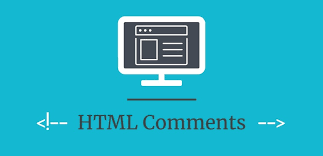HTML Tutorial
- HTML HOME
- HTML Introduction
- HTML Editors
- HTML Basics
- HTML Comments
- HTML Elements
- HTML Attributes
- HTML Headings
- HTML Paragraphs
- HTML Styles
- HTML Text Formatting
- HTML Quotations
- HTML Colors
- HTML Links
- HTML Images
- HTML Favicons: How to Add and Optimize for All Browsers
- HTML Page Title: How to Optimize Titles for SEO Success
- HTML Tables: Create & Optimize for Better Web Design | Codeezy
- HTML Lists: Types, Examples & SEO Tips for Better Structure
- HTML Block and Inline Elements
- HTML Iframes
- HTML File Paths
- HTML Layout
- HTML Computer Code Elements
- HTML Semantics
- HTML5 Semantics
- HTML Entities
- HTML Symbols
- HTML Emojis
- HTML Charsets
HTML Comments: A Developer’s Guide
HTML comments are more than just a way to leave notes in your code—they are a vital tool for maintaining clarity, fostering collaboration, and managing complex projects. Whether you’re a seasoned developer or just getting started, understanding how to effectively use HTML comments can significantly improve your coding workflow.
What Are HTML Comments?
HTML comments are snippets of text within your code that are not displayed on the rendered webpage. Encased within <!-- and -->, these comments serve as a powerful means of communication within your codebase. They allow you to annotate your code with explanations, reminders, and instructions, which can be invaluable for both personal reference and team collaboration.
Why Use HTML Comments?
- Enhanced Readability: Comments make your code easier to understand for yourself and others, especially when revisiting the code after a while.
- Facilitate Collaboration: Comments help team members quickly grasp the purpose and functionality of different code sections.
- Temporarily Disable Code: Use comments to temporarily deactivate parts of your code during testing without deleting it.
How to Add Comments in HTML
HTML supports two types of comments: single-line and multi-line. Both types are essential for different scenarios and can be quickly added using keyboard shortcuts.

1. Single-Line Comments
Single-line comments are perfect for brief notes or explanations. They are enclosed within the <!-- and --> tags.
Syntax:
<!-- This is a single-line comment -->
Example:
<!DOCTYPE html>
<html>
<body>
<!-- This is a heading tag -->
<h1>Codeezy.org</h1>
</body>
</html>
2. Multi-Line Comments
Multi-line comments are useful when you need to add more detailed explanations or temporarily disable multiple lines of code.
Syntax:
<!--
This is a multi-line comment.
It spans multiple lines.
-->
Example:
<!DOCTYPE html>
<html>
<body>
<!--
This is a multi-line comment.
It can span across multiple lines.
-->
<h1>Codeezy.org</h1>
</body>
</html>
<!DOCTYPE html>
<html>
<body>
<!-- This is a single-line comment -->
<h2>This is a heading</h2>
</body>
</html>
Example 2: Multi-Line Comment
This example illustrates how to add a multi-line comment:
<!DOCTYPE html>
<html>
<body>
<!--
This is a multi-line comment.
It can be used to temporarily hide code
or add detailed explanations.
-->
<h2>This is another heading</h2>
</body>
</html>
Output:
None of the comments will appear on the rendered webpage.
Conclusion
HTML comments are essential for writing clean, understandable, and maintainable code. They not only serve as a communication tool among developers but also help in documenting your code effectively. By mastering the use of comments, you can enhance your coding practice and collaborate more efficiently on projects.
FAQs: HTML Comments
1. How do you write comments in HTML?
Comments in HTML are written using the <!-- and --> tags.
2. What are conditional comments in HTML?
Conditional comments are special comments used to target specific versions of Internet Explorer, allowing developers to write code that only affects those browsers.
3. What are the types of comments in HTML?
There are three types of comments in HTML: single-line, inline, and multi-line comments.
4. Why are HTML comments important?
HTML comments are crucial for documenting your code, making it easier to understand, debug, and maintain. They also aid in collaboration by providing context and explanations within the code.
5. How do you comment CSS in HTML?
To comment CSS in HTML, use /* comment */ within <style> tags or in an external CSS file.
Thank You for Visiting Codeezy.org!
We’re thrilled to have you as part of our coding community. Your engagement and support inspire us to continue providing high-quality resources and tools to enhance your web development journey. Whether you’re a beginner or an experienced coder, we hope you found valuable insights and tools here at Codeezy.
Stay connected for more tips, tutorials, and updates to help you code with ease. Thank you for choosing Codeezy.org—your growth as a developer is our motivation!
Happy coding!
